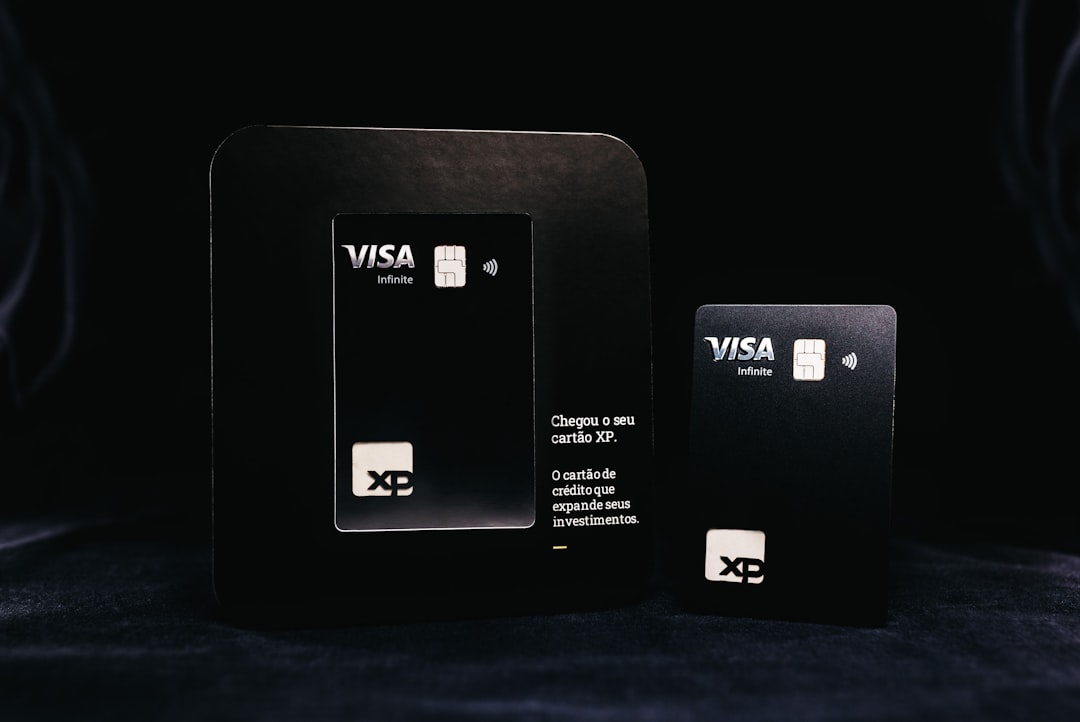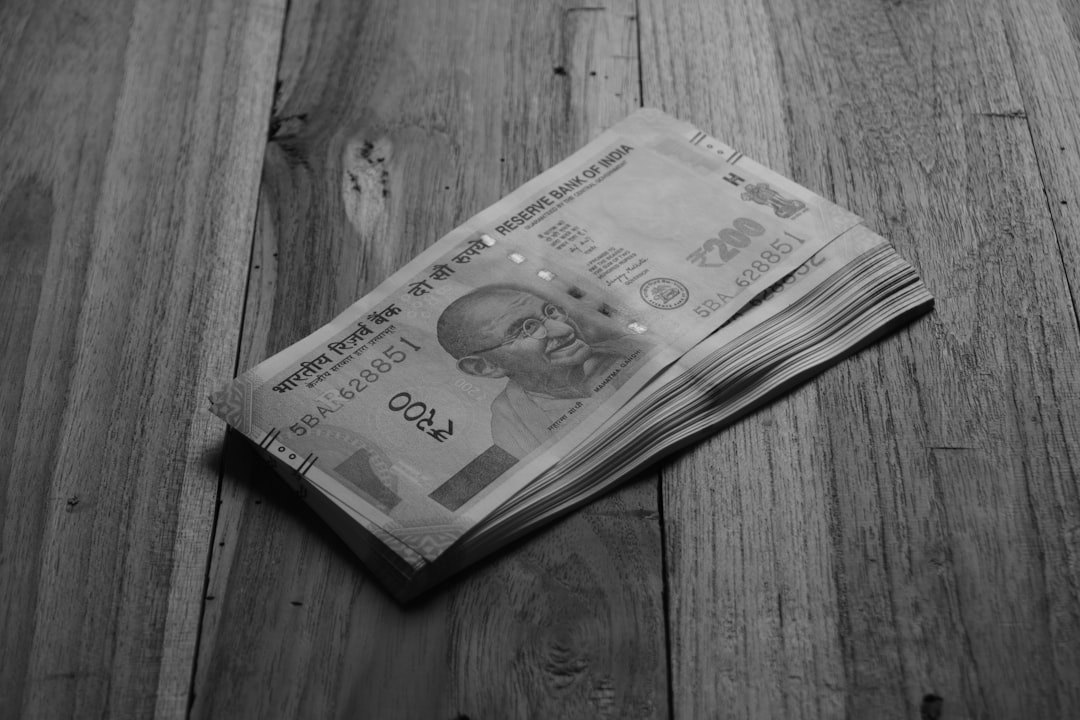Unlocking Seamless Banking and Payments Anywhere in the World

Introduction
Living a location‑independent life is a dream for many, but the practical side of moving from one country to the next can feel like navigating a maze of banks, payment platforms, and tax rules. The freedom to work from a beach in Bali, a café in Lisbon, or a mountain cabin in Chile hinges on one essential capability: the ability to move money quickly, safely, and at a reasonable cost no matter where you are. This guide explores the core components of seamless banking and payments for digital nomads, offering concrete strategies, legal considerations, and a toolbox of international payment methods that work for the modern wanderer.
Understanding the Nomadic Financial Landscape
Why Traditional Banking Is Often a Mismatch
Most conventional banks design their products around a fixed address, a stable employment relationship, and a predictable set of regulatory requirements. When you are constantly changing your residence, those assumptions break down:
- Proof of address – banks typically ask for a utility bill or lease agreement. Short‑term rentals, co‑working spaces, or friends’ addresses rarely meet the criteria.
- Residency limits – many banks close accounts if you spend more than a certain number of days outside the home country.
- Currency constraints – holding only the local currency means you incur conversion fees every time you pay for a service abroad.
- Compliance hurdles – anti‑money‑laundering (AML) and know‑your‑customer (KYC) checks can become more invasive when you lack a permanent address.
These friction points are why a growing number of nomads turn to alternative solutions that are built for mobility.
The Core Pillars of a Nomadic Money System
A robust financial setup for a location‑independent lifestyle rests on four pillars:
- Accessibility – the ability to open, manage, and close accounts online without needing to visit a branch.
- Multi‑currency support – holding, spending, and converting between several currencies with low fees.
- Regulatory compliance – staying on the right side of tax, reporting, and residency rules in both home and host countries.
- Security and redundancy – protecting against fraud, loss of access, and geopolitical disruptions.
Every tool you add to your toolkit should reinforce at least one of these pillars.
Choosing the Right Bank for a Global Lifestyle
Digital‑Only Banks: The New Frontier
Digital‑only banks, sometimes called “neobanks,” have emerged as a popular choice for nomads because they operate entirely online, often with a focus on multi‑currency functionality.
Key features to look for
- Global account eligibility – no requirement for a domestic address, or acceptance of a mailing address in a country you plan to stay in.
- Free or low‑cost international transfers – many neobanks partner with fintech networks that let you send money across borders at the interbank rate.
- Real‑time currency conversion – the ability to exchange money within the app at market rates, often with a small markup.
- Instant virtual cards – useful for online subscriptions and services that need a card number immediately.
Popular options
- Revolut – offers a range of plans, supports 30+ currencies, and provides a free virtual card.
- Wise (formerly TransferWise) – known for its transparent fee structure and borderless account that gives you local banking details in several regions.
- N26 – a European‑focused bank that provides fee‑free card payments worldwide and a simple mobile interface.
When evaluating a digital‑only bank, pay attention to the countries where you can legally reside while keeping the account open. Some providers restrict usage to specific regions due to licensing.
Traditional Banks with Global Reach
If you prefer the stability and reputation of a legacy institution, look for banks that have a multinational presence and a clear policy for expatriates.
What to assess
- Expatriate banking programs – many large banks have dedicated services for global citizens, often including multi‑currency accounts and preferential exchange rates.
- International branch network – the ability to visit a branch in a foreign country can be valuable for cash deposits or complex queries.
- Fee transparency – legacy banks sometimes hide costs in fine print. Verify fees for ATM withdrawals abroad, foreign exchange, and incoming international transfers.
Examples
- HSBC – offers an “Expat” account that lets you hold up to 10 currencies and provides global support.
- Citi – provides “Citibank Global Executive Banking” with multi‑currency balances and worldwide ATM access.
- Santander – has a “Santander One World” product aimed at frequent travelers.
While these banks may charge higher fees than neobanks, they often provide additional layers of customer service and regulatory compliance assistance.
Setting Up a Multi‑Currency Account
A multi‑currency account acts as the hub of your nomadic financial system. It lets you receive payments in one currency, hold them, and spend or convert them later when rates are favorable.
Step‑by‑Step Guide
- Research eligibility – confirm that the provider accepts applicants from your current country of residence and does not require a permanent address.
- Gather documentation – typical KYC documents include a passport, a selfie, and a proof‑of‑address document (a recent bank statement, a utility bill, or a government‑issued ID that shows an address). Some digital banks accept a “letter from a host” if you are staying with friends.
- Complete the online application – fill in personal details, upload the documents, and answer any compliance questions about the source of funds.
- Verify your identity – you may need to complete a video call or use a live‑photo verification tool.
- Activate the account – once approved, set a strong password, enable two‑factor authentication (2FA), and link a secondary email for recovery.
- Add local banking details – many borderless accounts provide you with IBANs, US routing numbers, or UK sort codes. These allow you to receive domestic transfers as if you had a local bank account.
- Fund the account – you can add money via a debit card, a wire transfer, or by linking another bank account. Some providers also let you top up using cash at partner locations.
- Set up currency buckets – allocate portions of your balance to the currencies you use most (USD, EUR, GBP, AUD, etc.). This makes spending and conversion more straightforward.
- Configure automatic conversion rules – if you anticipate regular expenses in a particular currency, set a trigger that converts funds when the exchange rate reaches a predefined threshold.
- Test the system – make a small purchase or transfer to ensure the card works, the conversion rates are as expected, and the transaction appears in the app.
Keeping the Account Secure
- Enable biometric login (fingerprint or face ID) where available.
- Use a hardware security key for 2FA on the web portal.
- Regularly review login activity and revoke any unfamiliar devices.
- Set daily transaction limits that align with your typical spending.
Managing Currency Conversion Costs
Currency conversion is the hidden cost that can erode a nomad’s income if not managed wisely.
Understanding Exchange Rate Markups
Most banks apply a markup on the interbank rate. For example, a bank may quote a rate that is 1‑2 % worse than the market rate. Neobanks often charge a lower percentage, while legacy banks may add a flat fee per transaction.
Strategies to Minimize Fees
- Batch conversions – instead of converting small amounts daily, wait until you have a larger sum to exchange, reducing the number of fees incurred.
- Use “mid‑market” providers – services like Wise, Revolut, or CurrencyFair typically offer rates close to the interbank rate with a small, transparent fee.
- Leverage local currency – when paying for goods or services, choose the local currency rather than your home currency to avoid dynamic currency conversion (DCC) fees.
- Set limit orders – some platforms let you set a target exchange rate; the system will automatically convert when the market reaches that level.
- Avoid double conversion – if you need to move money from a USD account to a EUR account, try to do it in one step rather than converting USD to GBP first, then GBP to EUR.
Payment Cards for the Road
A reliable payment card is the most convenient tool for everyday spending, from groceries to rideshares.
Choosing the Right Card
- No foreign transaction fees – look for cards that waive the typical 2‑3 % fee on purchases made outside your home country.
- Free ATM withdrawals – many cards charge a per‑withdrawal fee after a certain number of free withdrawals per month.
- Contactless support – tap‑to‑pay speeds up transactions and often works in places where chip‑and‑pin is not accepted.
- Multiple currency balances – cards linked to a multi‑currency account can automatically deduct from the correct currency bucket.
Card Issuers to Consider
- Revolut Premium/Metal – offers fee‑free foreign transactions, unlimited ATM withdrawals up to a certain limit, and a virtual disposable card for online security.
- Wise debit card – draws from your borderless account balances, provides low‑cost conversions, and supports free ATM withdrawals up to a monthly cap.
- N26 Metal – includes free worldwide ATM withdrawals, travel insurance, and a metal card for added durability.
Practical Tips for Card Use
- Notify your issuer of travel plans – even though many providers have no fraud detection based on location, a quick heads‑up prevents unnecessary blocks.
- Carry a backup card – keep a second card from a different provider in case one is declined or frozen.
- Prefer chip‑and‑pin over magstripe – many countries still rely on chip technology; magstripe can be disabled for added security.
- Check daily limits – know the maximum amount you can spend or withdraw each day to avoid surprises during high‑value purchases.
Mobile Wallets and Contactless Payments
Digital wallets such as Apple Pay, Google Pay, and Samsung Pay have become mainstream in many regions. They provide an extra layer of security because the actual card number never leaves the device.
When to Use Mobile Wallets
- Fast checkout – in coffee shops, supermarkets, and transit systems where tapping the phone is faster than inserting a card.
- Reduced card wear – less physical handling means fewer chances for card damage.
- Enhanced security – tokenization replaces your real card details with a one‑time code.
Compatibility Checklist
- Ensure your payment card is supported by the mobile wallet (most major cards are).
- Verify that the country you are visiting has merchants that accept contactless payments.
- Keep your device’s operating system up to date to maintain security patches.
- Enable a strong screen lock (PIN, password, biometric) to prevent unauthorized use.
Cross Border Transfers: Getting Money Where It Needs to Be
Even with a multi‑currency account and local cards, there are moments when you must move money across borders—paying a contractor in another country, topping up a family member’s account, or funding a travel budget.
Transfer Methods Overview
- Bank wire – reliable but often expensive, especially for small amounts.
- Online money‑transfer services – Wise, Remitly, and WorldRemit provide fast, low‑cost transfers with transparent fees.
- Cryptocurrency – can be useful for instant settlement, but price volatility and tax implications must be considered.
- Peer‑to‑peer platforms – apps like PayPal, Revolut, or Zelle allow quick transfers between users, though they may impose limits or fees for currency conversion.
Best Practices
- Compare total cost – include both the fee and the exchange rate margin.
- Check delivery speed – some services can deliver funds within minutes, while others take 2‑3 business days.
- Verify recipient details – double‑check IBAN, SWIFT/BIC, or wallet address to avoid costly errors.
- Keep records – retain receipts and transaction IDs for tax reporting and potential disputes.
- Use the same provider for inbound and outbound transfers – this can reduce fees and simplify reconciliation.
Tax Residency and Legal Considerations
The freedom to move comes with the responsibility to understand how different jurisdictions view your tax status. Missteps can lead to double taxation, penalties, or even loss of access to banking services.
Determining Tax Residency
Most countries use a “days‑in‑the‑country” test (often 183 days) or a “center of vital interests” approach. Some nations, such as the United Arab Emirates or Panama, offer favorable tax regimes for expatriates.
Key steps to clarify residency
- Track the number of days spent in each country using a spreadsheet or a travel‑log app.
- Review the tax treaty network of your home country; many nations have agreements that prevent double taxation.
- Consider establishing a “tax home” – the place where you earn the majority of your income and maintain a permanent address.
- If you plan to stay longer than a few months in a country, consult a local tax advisor to determine if you need to file a tax return there.
Reporting International Accounts
Many jurisdictions require the disclosure of foreign financial assets.
- United States – citizens and green‑card holders must file an FBAR (FinCEN Form 114) if the aggregate value of foreign accounts exceeds $10,000 at any point during the year. Additionally, Form 8938 (FATCA) may be required.
- European Union – under the Common Reporting Standard (CRS), banks automatically share account information with tax authorities. Individuals must ensure their accounts are compliant.
- Australia, Canada, and other commonwealth nations – have similar reporting obligations for foreign assets.
Failure to report can result in substantial fines, so integrating compliance into your financial workflow is essential.
Legal Structures for Income
Nomads often earn through freelance platforms, remote employment, or owning an online business. Choosing the right legal structure can reduce tax exposure and simplify banking.
- Sole proprietorship – simplest, but income is taxed at personal rates in your country of residence.
- Limited Liability Company (LLC) or Private Limited Company (Ltd) – can provide liability protection and allow you to elect tax treatment in certain jurisdictions.
- International Business Company (IBC) – popular in offshore jurisdictions; useful for holding intellectual property or receiving payments with minimal withholding tax.
Before establishing any entity, seek advice from a qualified accountant familiar with cross‑border tax law. The cost of professional guidance is often outweighed by the savings in tax and compliance.
Building Redundancy: Multiple Accounts and Backup Plans
Relying on a single bank or card can be risky. Travel disruptions, political events, or technical outages may temporarily block access to funds.
Recommended Redundancy Strategy
- Primary account – a digital‑only bank with low fees and robust multi‑currency features.
- Secondary account – a traditional bank with a strong global presence, used for larger transfers and emergency cash deposits.
- Backup card – a prepaid or prepaid‑style card that can be reloaded online, useful if your main card is lost or frozen.
- Emergency cash stash – a modest amount of local currency stored in a secure location (e.g., a hidden travel pouch) for immediate needs.
Regular Audits
- Quarterly, review the health of each account (balance, fees, access).
- Test the backup card by making a small purchase.
- Update contact information and emergency contacts with each provider.
- Rotate passwords and security keys to mitigate the risk of credential theft.
Practical Tips for Everyday Banking on the Move
- Use a VPN when accessing banking portals – some banks flag logins from unfamiliar IP addresses as suspicious.
- Prefer local ATMs over currency exchange kiosks – ATMs typically offer better rates, especially when you have a card with no foreign transaction fee.
- Set up automatic bill payments – for recurring expenses like domain renewals, subscription services, or insurance, schedule payments in your primary account to avoid missed deadlines.
- Keep a digital copy of important documents – store your passport, driver’s license, and card details in an encrypted cloud folder for quick retrieval if you lose physical copies.
- Leverage “spare change” rounding tools – some apps let you round up purchases to the nearest dollar and automatically transfer the difference to a savings bucket or investment account.
- Monitor exchange rates daily – set up alerts on platforms like Wise or a currency‑tracking app so you can act when rates move in your favor.
Frequently Asked Questions
Can I open a bank account without a permanent address?
Yes, many digital‑only banks accept a mailing address, a friend’s address, or a co‑working space address as long as you can provide supporting documentation.
What happens if my home country’s tax authority flags my foreign accounts?
You will need to submit the required reports (FBAR, CRS, etc.) and may be asked for documentation proving the source of funds. Prompt, transparent compliance usually resolves the issue.
Is it safe to keep most of my money in a single online bank?
Reputable neobanks are covered by deposit insurance in the jurisdictions where they are licensed (e.g., UK’s FSCS, EU’s Deposit Guarantee Schemes). However, spreading funds across multiple institutions adds an extra layer of protection.
Do I need a separate account for each currency?
Not necessarily. Multi‑currency accounts let you hold several currencies under one account number, making management easier. Some users still open local accounts for specific countries to enjoy free domestic transfers.
How can I avoid dynamic currency conversion (DCC) fees at point‑of‑sale?
When offered a choice, always select the local currency. DCC adds a markup that can be as high as 5 % on top of the exchange rate.
Conclusion
Living the nomadic life no longer requires you to sacrifice financial stability. By selecting the right mix of digital‑only banks, traditional global institutions, and multi‑currency accounts, you can unlock a seamless banking experience that follows you wherever you go. Pairing those tools with disciplined tax compliance, strategic currency conversion, and layered redundancy ensures that your money works as hard as you do, no matter the time zone or the language on the bank sign.
Take the steps outlined in this guide, tailor them to your personal circumstances, and you’ll find that the world becomes not just a series of destinations, but a network of opportunities—all supported by a financial system that finally matches the freedom of your lifestyle.
Random Posts

Wellbeing Hacks For Travelers Who Work Anywhere
Discover science-backed wellbeing hacks you can pack in a backpack: flexible mindset frameworks, timezone-proof sleep tricks, and no-gym workouts that keep digital nomads energized, focused and resilient wherever they roam.
1 month ago

Curated Collections of Apps and Media for the Travel‑First Lifestyle
Discover the essential apps, books, podcasts and tools that empower digital nomads and remote workers to stay connected, manage money, find safe stays, stay healthy and productive while traveling.
1 day ago

Living Cheap in Portugal as a Digital Nomad
Discover how digital nomads can enjoy Portugal's sunny climate, fast internet and rich culture while spending less by choosing affordable towns, budgeting smartly and using local tips for housing, food and leisure.
2 days ago

Smart Finance and Tax Strategies for Global Nomads
Smart finance and tax tips for digital nomads: banking, payments, compliance and asset protection made simple so you can travel worry free
2 months ago

Tax Residency Choices Explained for Remote Workers
Learn how remote workers can choose the optimal tax residency, avoid double taxation, and align taxes with lifestyle and income in this clear, step, by, step guide.
2 weeks ago
Latest Posts

Essential Software Every Remote Professional Should Use
Master remote work with essential tools: instant messaging like Slack, high definition video calls such as Zoom, and asynchronous voice apps. Streamline communication, stay connected and boost productivity.
1 day ago

Mastering Remote Work Productivity for Digital Nomads and Freelancers
Learn proven habits, tools, and tactics that help digital nomads and freelancers stay focused, deliver quality work, and maintain a sustainable lifestyle while traveling the world.
1 day ago

Tech‑Friendly European Towns Perfect for Remote Living
Discover Europe’s best small towns where fast internet, affordable living and vibrant tech communities let you work remotely while soaking up historic charm, lakeside views or mountain air.
1 day ago